So, That Happened - Dec. 14

So, That Happened
The internet is filled with thoughts about video games. Not just the kind that lands somewhere between "100" and "0" on Metacritic: stuff that truly expands our understanding of the medium and can help snap us out of bad habits. This week we'll take a tour of blogs and other news sites to explore making violence in games meaningful, meaningful memories in creating games, and creating important works from technical limitations.
It's tough to balance taking games seriously with keeping why many love them so much--they can be really freaking fun--close to your heart. With that in mind, this article concludes with a selection of three free, clever games you can play right from your browser. I don't know about you, but I need a little ice cream after finishing my broccoli. Even if it's really good broccoli.

Consensual Torture Simulator: Is game violence meaningful enough?
"Grand Theft Auto V's torture scene requires the player--at the behest of the 'FIB'--to apply pliers, hammers, waterboarding and other gruesome instruments against a person allegedly keeping information about insurgents Upon hearing of the scene, she had an idea: "I was thinking, well, something really edgy would be hitting someone who wants you to hit them, in a context where you want to do that."
Violence in video games isn't really surprising. The end result might be, when the game proudly displays a pile of gore the sickening likes of which would have been impossible to render on less-powerful hardware. But video games have been relying on violence from the get-go (unless Space Invaders was actually depicting a 55-against-one tennis match). Combat is to video games what meetings are to office work.
In Leigh Alexander's Gamasutra feature, game designer Merritt Kopas explains how she used kink to present violence in games in a new way: between two partners, one of who wants to be made to cry and the other who wants to inflict that pain. Whether you're interested in kink or not, Kopas' work circumvents the consequence-free flow of violence so many games rely on for a more intimate examination of pain and its effects on people.

Memories Of Doom, By John Romero & John Carmack
"I was strafing back and forth on one system and looking over my shoulder at the other computer, watching the marine sprite slide side to side in front of the other player's pistol. I let it coast down, centered on the screen, and turned to the other computer. 'Bang!' 'Urgh!' Twitch. Shuffle. Big smile. :-) 'Bang!' 'Bang!' 'Bang!' 'Bang!' There was a consistency failure before the first frag was truly logged, but it was blindingly obvious that this was going to be awesome."
Doom was important, as we've already demonstrated. And although John Romero has long since moved on, and John Carmack finally hung up his id Software mad-computer-scientist labcoat earlier this year, you can still feel the love and excitement they found in its creation in this brief Kotaku letters piece celebrating Doom's 20th anniversary. You can also see Romero's hair as it flows, river-like, across the decades.
Carmack didn't know it at the time, but his tinkerings would lead to the popularization of networked shooters and, more generally, real-time competition between distant opponents in video games. Can you imagine being in the room with him as the space marines started to jostle around on each other's screens for the first time, knowing what we know now? That sounds well worth a couple of angry calls from college network administrators.
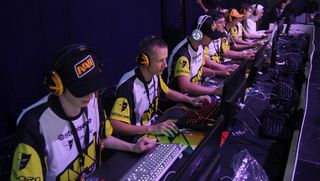
Why esports needs to ditch online aliases
"Basically, we should be able to get to know our professional players. We know them by aliases, not by their real names. It may seem like a small distinction, but when were talking about a players personality broadcasting to millions of people, it makes a difference."
My experience with eSports is limited to a couple broadcasts of Dota 2's The International, mostly qualifying matches--I was so bad at it, I mostly forgot to tune in for the actual tournament. I don't remember any of the competitors besides Dendi, who stuck in my head because his name sounds like a Dragon Ball Z character. Taylor Cocke argues in an onGamers op-ed that those colorful handles are holding eSports back.
Though I don't imagine many basketball players were household names back when James Naismith was still playing, eSports could grease the wheels of history by dropping the ridiculous screennames. Screen names have their place in some online interactions. But if eSports competitors and organizers hope to achieve anything close to the same recognition as their traditional sporting counterparts, moving out of underscored and cAmEl-CaSeD AIM names and into legitimate rosters is a good first step.

If you love games, you should refuse to be called a gamer
"The term is a miserable legacy of the mediums niche past, where video games were viewed as the sole preserve of white, western indoors-yteenagers. The clich has proven indelible. Gamers (a term that further segregates players, while adding unwelcome ghost notes that call to mind the gambling industry) are routinely represented in media as socially inept boys with poor hygiene and a proclivity for impotent rage, perhaps expressed down a Britney-style head mic while playing online shooters, or typed wrathfully onto an internet forum."
The "gaming community" is a tough thing to talk about, as Simon Parkin says in his piece for the New Statesman, because it's not entirely clear what the term means: we know the "gaming community" seems to be united in more than just playing games, as so much more has grown up around that central concept. So what's the problem? Why is it perceived as toxic?
If you ask me, any group of people united by commercial, consumer interest will have distorted relationships between its own members as well as the rest of the world. Our most sacred form of interacting with other "gamers" is shooting at them in the latest multi-million dollar product, and the Ultimate Gamer is marketed to us as a thin white guy wearing a smirk, a headset, and a pair of Gunnar Optiks. As long as this community is defined largely by the products it consumes, it will have a strange baseline identity.
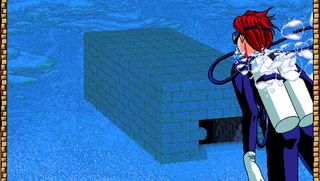
How furries wound up in an art gallery in Chelsea
"This subculture of programmers, using machines such as the NEC PC-9801 or Fujitsu FM Towns, gave birth to a vast underground game-making community--sorta similar to the indie game scene today, minus Twitter, Kickstarter, and Greenlight. The community was only aware of each other through magazine publication and game making contests. Many of these early developers continued making games with notable studios such as Square Enix and Falcom. The computers were too slow for, say, Wolfenstein 3D-style shooters, so the bulk of these games are visual novels or text adventures."
Ok, the title of this Kill Screen piece by Mariam Naziripour doesn't really convey why I found it interesting (not that furries aren't interesting). So let's take a step back: at this point, you're probably familiar with the term "visual novel." Some contemporary examples would be Analogue: A Hate Story or Zero Escape: Virtue's Last Reward. Closer to this article's focus is Hideo Kojima's cyberpunk detective story Snatcher--though it did have some goofy light-gun segments, as well.
It's intriguing to consider how the technology available to creators shapes their creations. These games, and their distinct low-bit-color illustrations, sprang forth from regionally released machines that had comparatively high-resolution screens but lacked the processor power to render fast-paced action on them. These concerns have since disappeared, but their impact on Japanese creators and games at large (particularly with the recent resurgence of interactive fiction) is still plain to see.
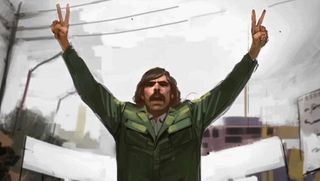
A Truly Revolutionary Video Game
"Khonsari hopes to infuse the game with the emotions he felt on the streets as a young boy, using graphic-novel-esque illustrations, historical photography, and stock footage. During the revolutions early days, Khonsaris grandfather took him into the streets to see the demonstrations, so he could witness a pivotal moment in the countrys history. 'The streets were filled with people and soldiers; helicopters flew overhead as military vehicles roared down major boulevards,' he said. I felt like I was in a movie.'"
I've played through D-Day more times than I can remember. The Invasion of Normandy is great fodder for shooter games because it's big, loud, and a straight shot up the beach. It's also thrilling to put yourself front-and-center in one of the most important historical events of the 20th century. But none of the creators behind those virtual boats and pillboxes were there; Saving Private Ryan's famed Normandy landing scene informed their creation as much as anything.
That's not true for Navid Khonsari's historical game. Simon Parkin (his second appearance this week) interviewed the 1979: Revolution creator (its second appearance in this feature series) for the New Yorker about living through, then creating a game about, the Iranian Revolution. This may be the first time someone who lived through a historical event of this magnitude has decided to create a large-scale game drawing from the experience. That makes 1979, whether its Kickstarter succeeds or not, of historical note itself.
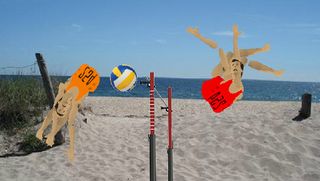
Ragdoll Olympics
The creator of McPixel assembles only the limpest athletes for Ragdoll Olympics. Ever since Porrasturvat I've found a special kind of glee in watching the flailing limbs of physics-enabled bodies in unusual situations. Make sure you keep playing past the track and field events--volleyball is surprisingly challenging when you don't have muscles.

3 Missing, 4am
Minimalism in horror came up last week, and Sophie Houlden's 3 Missing, 4am is a perfect example. It's so minimal--just one person stranded in the pitch-black wilderness with a lighter--that it might not meet some definitions. But if feeling anxious about rounding the next corner even though nothing bad's happened yet isn't horror, I don't know what is.
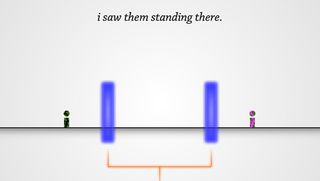
I Saw Her Too, With Lasers
Love is hard enough for two living, breathing people. For two zombies who don't even know that red lasers will incinerate you if you walk into them (I mean, duh)? Not a snowball's chance. Luckily, I Saw Her Too, With Lasers lets players work to reunite the undead pair through minimalist puzzles, breezy music, and buttons galore.

Talkback is activated
That's all for this week's selection of notable thoughts and games. But for all our efforts at building a perfect discussion curating machine, a few blind spots remain: if you find or create something interesting that we missed, be sure to drop us a line in the comments below.
Photo by Don DeBold

I got a BA in journalism from Central Michigan University - though the best education I received there was from CM Life, its student-run newspaper. Long before that, I started pursuing my degree in video games by bugging my older brother to let me play Zelda on the Super Nintendo. I've previously been a news intern for GameSpot, a news writer for CVG, and now I'm a staff writer here at GamesRadar.
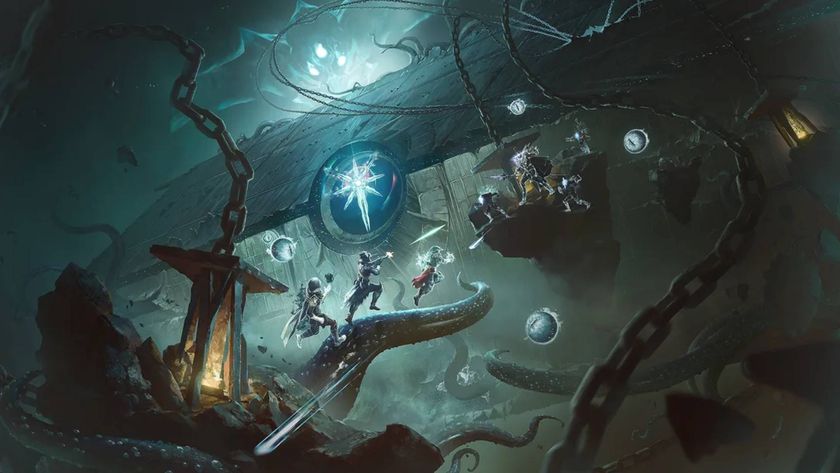
"A fun example of a bug becoming a feature": Destiny 2 accidentally made Exotic Glaives free to all classes, and Bungie says "we're going to let this ride"
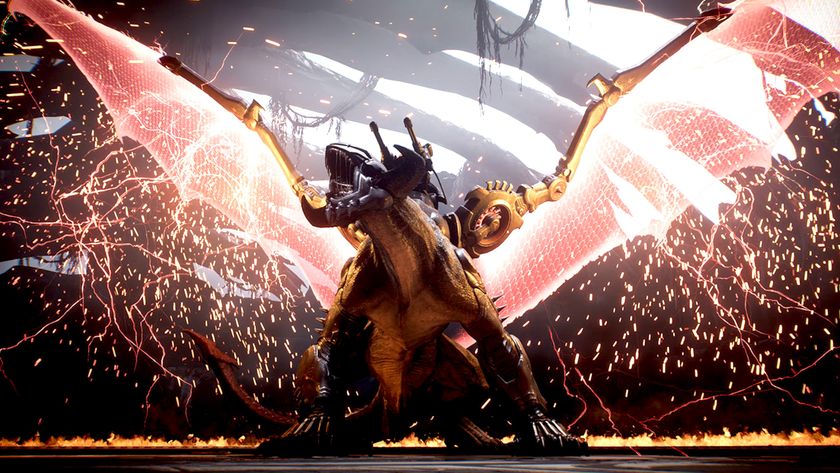
As if hell and demons weren't enough, Doom: The Dark Ages went medieval so id Software "could get more dark and sinister with the tool kit"

"A fun example of a bug becoming a feature": Destiny 2 accidentally made Exotic Glaives free to all classes, and Bungie says "we're going to let this ride"

As if hell and demons weren't enough, Doom: The Dark Ages went medieval so id Software "could get more dark and sinister with the tool kit"
Most Popular






